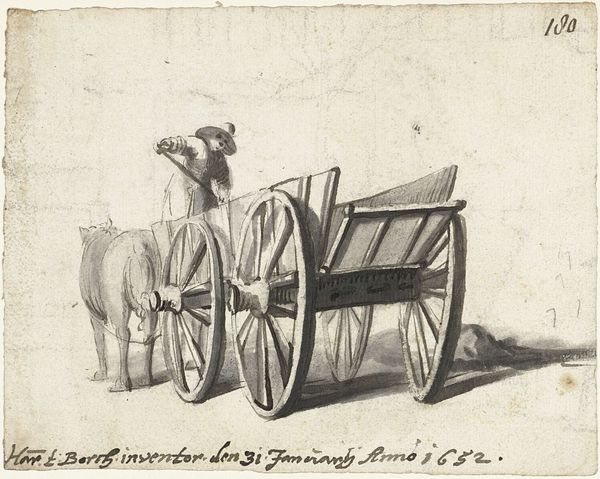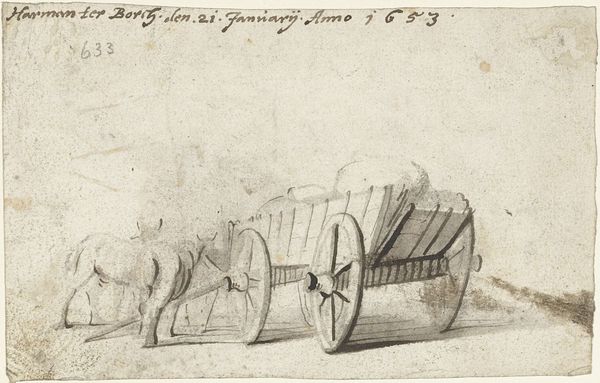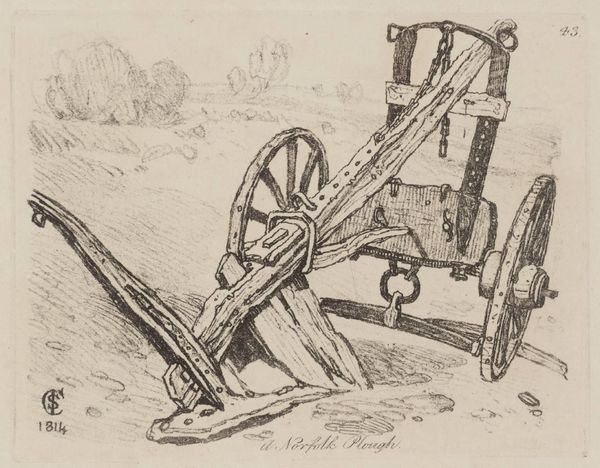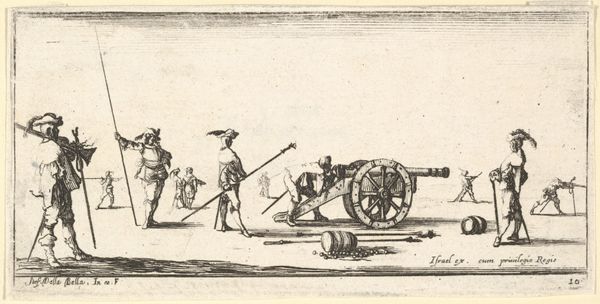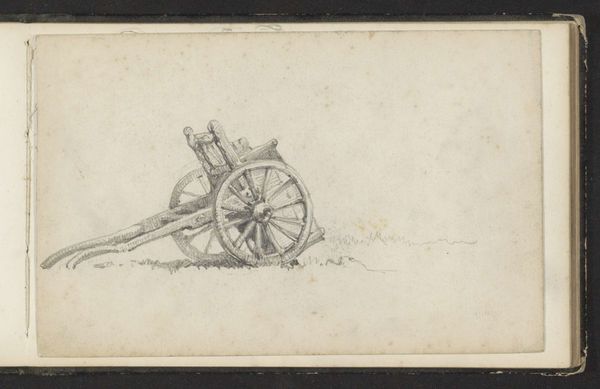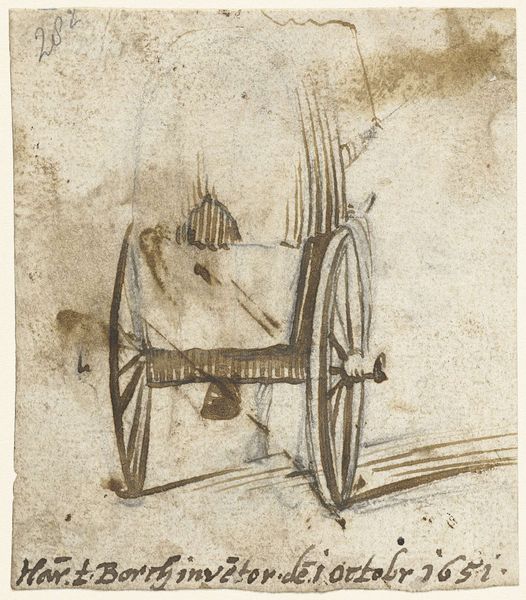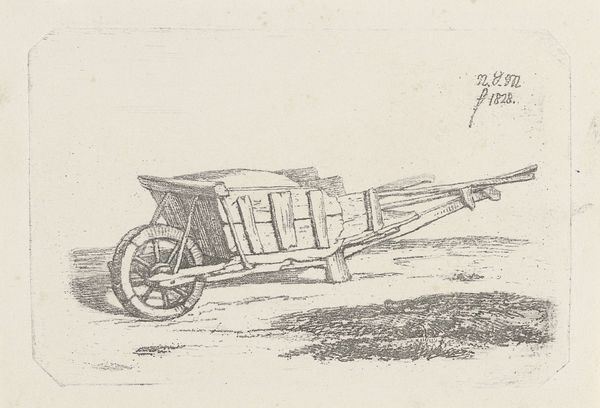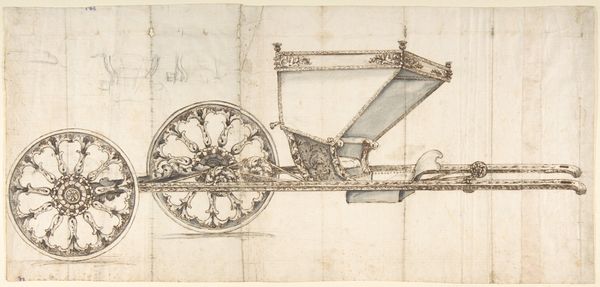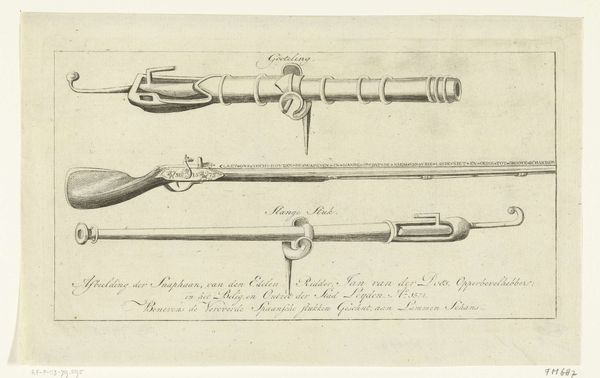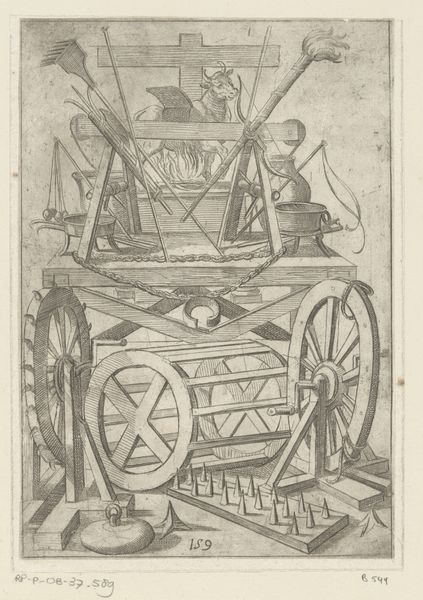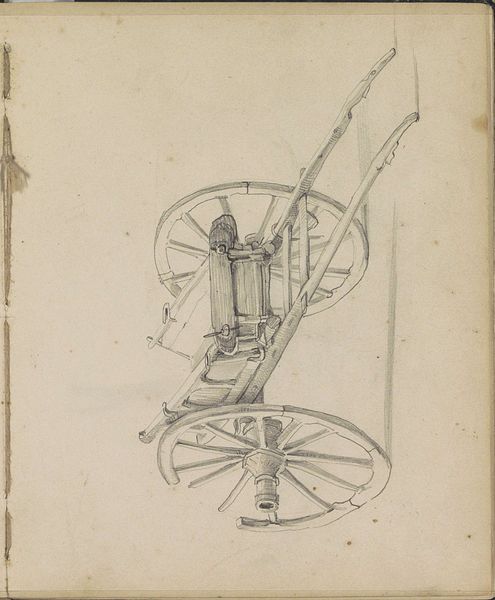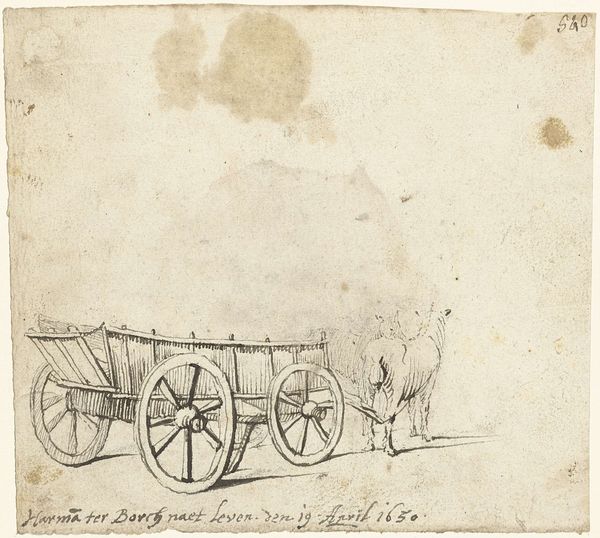
drawing, paper, pencil
#
drawing
#
dutch-golden-age
#
pencil sketch
#
landscape
#
figuration
#
paper
#
pencil
#
pencil work
#
genre-painting
Dimensions: height 67 mm, width 130 mm
Copyright: Rijks Museum: Open Domain
Curator: This drawing, held here at the Rijksmuseum, is attributed to Harmen ter Borch and is called "Man trekt een kar om hout mee te vervoeren," which translates to "Man Pulling a Cart to Transport Wood." It's believed to date back to around 1652. Editor: The immediate impression is one of strenuous labor; you can practically feel the strain in the man's posture, rendered with such simple, economic lines in pencil. It’s a study in effort and rudimentary conveyance. Curator: Absolutely, and focusing on those "economic lines," consider the materiality here. Ter Borch employed pencil on paper – accessible materials. This piece reflects the everyday reality, the labor inherent in Dutch life of the Golden Age, a very hands-on relationship to material necessity, as shown in the need to transport wood in order to survive. Editor: The figure is anonymous, universal. He stands as a symbol for a working-class struggle that persists over centuries. The drawing captures a moment of interaction between the social body and landscape during the period of Dutch expansion and commercial success, fueled often by exploited labor. Curator: It is just that connection, the daily, mundane tasks depicted with clear observation that makes the drawing compelling. The production aspect can't be ignored: wood fueling homes and industries of the 17th century, and, furthermore, pencil manufacturing requiring graphite and woodworking to produce. Each element contributing to our narrative today. Editor: The act of pulling, particularly for something as basic as wood, points to issues of class, and speaks to an uneven distribution of labor within Dutch society. I can't help but read a critique of early capitalistic structures within that simple, almost naive image of physical struggle. How much of Ter Borch's reality are we seeing filtered in there, though? Curator: Well, it provokes such thoughts on a grand scale. We may never be certain. This drawing allows us a moment of quiet reflection, really allowing us to reconsider work processes and their role within the Dutch Golden Age through this drawing medium. Editor: A pertinent reminder of how foundational certain overlooked kinds of labour are even within national historical frameworks like Golden Ages. Curator: Precisely, and I’m particularly glad we discussed the means of making this pencil work in tandem with understanding its message and our own preconceptions regarding daily labor.
Comments
No comments
Be the first to comment and join the conversation on the ultimate creative platform.
